- Home
- Jane Austen
Complete Works of Jane Austen
Complete Works of Jane Austen Read online
The Complete Works of
JANE AUSTEN
(1775-1817)
Contents
The Novels
SENSE AND SENSIBILITY
PRIDE AND PREJUDICE
MANSFIELD PARK
EMMA
NORTHANGER ABBEY
PERSUASION
LADY SUSAN
The Unfinished Novels
THE WATSONS
SANDITON
The Juvenilia
LIST OF EARLY WORKS
The Letters
THE LETTERS OF JANE AUSTEN
The Criticism
JANE AUSTEN by Sir Walter Scott
ARCHBISHOP WHATELY ON JANE AUSTEN by Richard Whately
TO JANE AUSTEN by Andrew Lang
REALISM: JANE AUSTEN by Richard Burton
ON JANE AUSTEN IN THE GENERAL ELECTION by G. K. Chesterton
JANE AUSTEN’S JUVENILIA by G. K. Chesterton
JANE AUSTEN: NATURAL HISTORIAN by Robert Lynd
THREE ESSAYS ON JANE AUSTEN by Virginia Woolf
The Biographies
A MEMOIR OF JANE AUSTEN by James Edward Austen-Leigh
JANE AUSTEN, HER LIFE AND LETTERS by William Austen-Leigh and Richard Arthur Austen-Leigh
© Delphi Classics 2014
Version 5
The Complete Works of
JANE AUSTEN
By Delphi Classics, 2014
Interested in Early Nineteenth Century literature?
Other Novelists
by Delphi Classics
For the first time in publishing history, Delphi Classics is proud to present the complete novels of these important contemporary authors.
www.delphiclassics.com
The Novels
Jane Austen’s birthplace, Steventon Parsonage, Hampshire — sadly, no longer standing
George Austen, the author’s father
Steventon Church, where George Austen was rector for many years
Jane Austen as a child
SENSE AND SENSIBILITY
Sense and Sensibility was the author’s first novel to be published, although not her first to be written and completed. Thomas Egerton of the Military Library publishing house released the work in three volumes in 1811 and Austen used the pseudonym ‘A Lady’ for the novel. She had taken a substantial financial risk, paying for the publication, costing more than a third of her annual household income. Fortunately, the 750 copies of the first edition sold out and she was able to make a profit. The first draft of the work, titled Elinor and Marianne, was composed in the mid 1790’s when Austen was still in her teenage years. The early work was written in epistolary form and focused on the contrasting natures and attitudes of two sisters. Elinor is exceedingly restrained and reserved, while Marianne is excessively emotional and impetuous. In Sense and Sensibility the sisters’ dispositions remain as they were in the first draft of the novel, although Austen creates a far more complex and ambiguous portrait of the benefits and flaws of each nature.
The plot centres on the Dashwood sisters and their romantic suitors, Edward Ferrars, John Willoughby and Colonel Brandon. The novel begins with Mrs Dashwood and her three daughters being removed from their home after Mr Dashwood dies and the property is left to his son John from his first marriage. Fanny, John’s wife, a cold, calculating woman, has a brother Edward, who comes to stay with the family and develops a rapport with Elinor, before they are separated by circumstances. Meanwhile, Marianne meets the charming and dashing Willoughby and enters into a passionate relationship with him.
An interesting facet of the novel is Austen’s assessment of Marianne’s nature and behaviour, which she renders more sympathetically than might have been the case. The author originally began composing the work during the aftermath of the French Revolution; a period of great anxiety in England at the possibility of social upheaval. During this period, novels centred on heroes of great sensibility were fashionable and widespread; most importantly they were viewed as potentially socially and politically subversive. Excessive sensibility was linked by the ruling class to the bloody and violent French Revolution, where they a perceived there was a loss of reason and control. One conservative reaction to this anxiety was to criticise and satirise this emphasis on feeling and subjective experience and portray them as dangerous and threatening. Though Austen clearly exposes what she believes to be the hazards of unrestrained emotion, she portrays Marianne in a largely attractive and sympathetic light. Conversely, Elinor’s extreme reserve and emotional inhibitions are shown to cause her much pain and anguish.
The first edition
The original title page
CONTENTS
INTRODUCTION
CHAPTER I
CHAPTER II
CHAPTER III
CHAPTER IV
CHAPTER V
CHAPTER VI
CHAPTER VII
CHAPTER VIII
CHAPTER IX
CHAPTER X
CHAPTER XI
CHAPTER XII
CHAPTER XIII
CHAPTER XIV
CHAPTER XV
CHAPTER XVI
CHAPTER XVII
CHAPTER XVIII
CHAPTER XIX
CHAPTER XX
CHAPTER XXI
CHAPTER XXII
CHAPTER XXIII
CHAPTER XXIV
CHAPTER XXV
CHAPTER XXVI
CHAPTER XXVII
CHAPTER XXVIII
CHAPTER XXIX
CHAPTER XXX
CHAPTER XXXI
CHAPTER XXXII
CHAPTER XXXIII
CHAPTER XXXIV
CHAPTER XXXV
CHAPTER XXXVI
CHAPTER XXXVII
CHAPTER XXXVIII
CHAPTER XXXIX
CHAPTER XL
CHAPTER XLI
CHAPTER XLII
CHAPTER XLIII
CHAPTER XLIV
CHAPTER XLV
CHAPTER XLVI
CHAPTER XLVII
CHAPTER XLVIII
CHAPTER XLIX
CHAPTER L
The Oscar winning 1995 film adaptation
Emma Thompson and Kate Winslet in the 1995 adaptation
The 2008 television adaptation
INTRODUCTION
With the title of Sense and Sensibility is connected one of those minor problems which delight the cummin-splitters of criticism. In the Cecilia of Madame D’Arblay — the forerunner, if not the model, of Miss Austen — is a sentence which at first sight suggests some relationship to the name of the book which, in the present series, inaugurated Miss Austen’s novels. ‘The whole of this unfortunate business’ — says a certain didactic Dr. Lyster, talking in capitals, towards the end of volume three of Cecilia—’has been the result of Pride and Prejudice,’ and looking to the admitted familiarity of Miss Austen with Madame D’Arblay’s work, it has been concluded that Miss Austen borrowed from Cecilia, the title of her second novel. But here comes in the little problem to which we have referred. Pride and Prejudice it is true, was written and finished before Sense and Sensibility — its original title for several years being First Impressions. Then, in 1797, the author fell to work upon an older essay in letters à la Richardson, called Elinor and Marianne, which she re-christened Sense and Sensibility. This, as we know, was her first published book; and whatever may be the connection between the title of Pride and Prejudice and the passage in Cecilia, there is an obvious connection between the title of Pride and Prejudice and the title of Sense and Sensibility. If Miss Austen re-christened Elinor and Marianne before she changed the title of First Impressions, as she well may have, it is extremely unlikely that the name of Pride and Prejudice has anything
to do with Cecilia (which, besides, had been published at least twenty years before). Upon the whole, therefore, it is most likely that the passage in Madame D’Arblay is a mere coincidence; and that in Sense and Sensibility, as well as in the novel that succeeded it in publication, Miss Austen, after the fashion of the old morality plays, simply substituted the leading characteristics of her principal personages for their names. Indeed, in Sense and Sensibility the sense of Elinor, and the sensibility (or rather sensiblerie) of Marianne, are markedly emphasised in the opening pages of the book But Miss Austen subsequently, and, as we think, wisely, discarded in her remaining efforts the cheap attraction of an alliterative title. Emma and Persuasion, Northanger Abbey and Mansfield Park, are names far more in consonance with the quiet tone of her easy and unobtrusive art.
Elinor and Marianne was originally written about 1792. After the completion — or partial completion, for it was again revised in 1811 — of First Impressions (subsequently Pride and Prejudice), Miss Austen set about recasting Elinor and Marianne, then composed in the form of letters; and she had no sooner accomplished this task, than she began Northanger Abbey. It would be interesting to know to what extent she remodelled Sense and Sensibility in 1797-98, for we are told that previous to its publication in 1811 she again devoted a considerable time to its preparation for the press, and it is clear that this does not mean the correction of proofs alone, but also a preliminary revision of MS. Especially would it be interesting if we could ascertain whether any of its more finished passages, e.g. the admirable conversation between the Miss Dashwoods and Willoughby in chapter x., were the result of those fallow and apparently barren years at Bath and Southampton, or whether they were already part of the second version of 1797-98. But upon this matter the records are mute. A careful examination of the correspondence published by Lord Brabourne in 1884 only reveals two definite references to Sense and Sensibility and these are absolutely unfruitful in suggestion. In April 1811 she speaks of having corrected two sheets of ‘S and S,’ which she has scarcely a hope of getting out in the following June; and in September, an extract from the diary of another member of the family indirectly discloses the fact that the book had by that time been published. This extract is a brief reference to a letter which had been received from Cassandra Austen, begging her correspondent not to mention that Aunt Jane wrote Sense and Sensibility. Beyond these minute items of information, and the statement — already referred to in the Introduction to Pride and Prejudice — that she considered herself overpaid for the labour she had bestowed upon it, absolutely nothing seems to have been preserved by her descendants respecting her first printed effort. In the absence of particulars some of her critics have fallen to speculate upon the reason which made her select it, and not Pride and Prejudice, for her début; and they have, perhaps naturally, found in the fact a fresh confirmation of that traditional blindness of authors to their own best work, which is one of the commonplaces of literary history. But this is to premise that she did regard it as her masterpiece, a fact which, apart from this accident of priority of issue, is, as far as we are aware, nowhere asserted. A simpler solution is probably that, of the three novels she had written or sketched by 1811, Pride and Prejudice was languishing under the stigma of having been refused by one bookseller without the formality of inspection, while Northanger Abbey was lying perdu in another bookseller’s drawer at Bath. In these circumstances it is intelligible that she should turn to Sense and Sensibility, when, at length — upon the occasion of a visit to her brother in London in the spring of 1811 — Mr. T. Egerton of the ‘Military Library,’ Whitehall, dawned upon the horizon as a practicable publisher.
By the time Sense and Sensibility left the press, Miss Austen was again domiciled at Chawton Cottage. For those accustomed to the swarming reviews of our day, with their Babel of notices, it may seem strange that there should be no record of the effect produced, seeing that, as already stated, the book sold well enough to enable its putter-forth to hand over to its author what Mr. Gargery, in Great Expectations, would have described as ‘a cool £150.’ Surely Mr. Egerton, who had visited Miss Austen at Sloane Street, must have later conveyed to her some intelligence of the way in which her work had been welcomed by the public. But if he did, it is no longer discoverable. Mr. Austen Leigh, her first and best biographer, could find no account either of the publication or of the author’s feelings thereupon. As far as it is possible to judge, the critical verdicts she obtained were mainly derived from her own relatives and intimate friends, and some of these latter — if one may trust a little anthology which she herself collected, and from which Mr. Austen Leigh prints extracts — must have been more often exasperating than sympathetic. The long chorus of intelligent approval by which she was afterwards greeted did not begin to be really audible before her death, and her ‘fit audience’ during her lifetime must have been emphatically ‘few,’ Of two criticisms which came out in the Quarterly early in the century, she could only have seen one, that of 1815; the other, by Archbishop Whately, the first which treated her in earnest, did not appear until she had been three years dead. Dr. Whately deals mainly with Mansfield Park and Persuasion; his predecessor professed to review Emma, though he also gives brief summaries of Sense and Sensibility and Pride and Prejudice. Mr. Austen Leigh, we think, speaks too contemptuously of this initial notice of 1815. If, at certain points, it is half-hearted and inadequate, it is still fairly accurate in its recognition of Miss Austen’s supreme merit, as contrasted with her contemporaries — to wit, her skill in investing the fortunes of ordinary characters and the narrative of common occurrences with all the sustained excitement of romance. The Reviewer points out very justly that this kind of work, ‘being deprived of all that, according to Bayes, goes “to elevate and surprise,” must make amends by displaying depth of knowledge and dexterity of execution.’ And in these qualities, even with such living competitors of her own sex as Miss Edgeworth and Miss Brunton (whose Self-control came out in the same year as Sense and Sensibility), he does not scruple to declare that ‘Miss Austen stands almost alone.’ If he omits to lay stress upon her judgment, her nice sense of fitness, her restraint, her fine irony, and the delicacy of her artistic touch, something must be allowed for the hesitations and reservations which invariably beset the critical pioneer.
To contend, however, for a moment that the present volume is Miss Austen’s greatest, as it was her first published, novel, would be a mere exercise in paradox. There are, who swear by Persuasion; there are, who prefer Emma and Mansfield Park; there is a large contingent for Pride and Prejudice; and there is even a section which advocates the pre-eminence of Northanger Abbey. But no one, as far as we can remember, has ever put Sense and Sensibility first, nor can we believe that its author did so herself. And yet it is she herself who has furnished the standard by which we judge it, and it is by comparison with Pride and Prejudice, in which the leading characters are also two sisters, that we assess and depress its merit. The Elinor and Marianne of Sense and Sensibility are only inferior when they are contrasted with the Elizabeth and Jane of Pride and Prejudice; and even then, it is probably because we personally like the handsome and amiable Jane Bennet rather better than the obsolete survival of the sentimental novel represented by Marianne Dashwood. Darcy and Bingley again are much more ‘likeable’ (to use Lady Queensberry’s word) than the colourless Edward Ferrars and the stiff-jointed Colonel Brandon. Yet it might not unfairly be contended that there is more fidelity to what Mr. Thomas Hardy has termed ‘life’s little ironies’ in Miss Austen’s disposal of the two Miss Dashwoods than there is in her disposal of the heroines of Pride and Prejudice. Every one does not get a Bingley, or a Darcy (with a park); but a good many sensible girls like Elinor pair off contentedly with poor creatures like Edward Ferrars, while not a few enthusiasts like Marianne decline at last upon middle-aged colonels with flannel waistcoats. George Eliot, we fancy, would have held that the fates of Elinor and Marianne were more probable than the fortunes of Jane and Eliza B
ennet. That, of the remaining characters, there is certainly none to rival Mr. Bennet, or Lady Catherine de Bourgh, or the ineffable Mr. Collins, of Pride and Prejudice, is true; but we confess to a kindness for vulgar matchmaking Mrs. Jennings with her still-room ‘parmaceti for an inward bruise’ in the shape of a glass of old Constantia; and for the diluted Squire Western, Sir John Middleton, whose horror of being alone carries him to the point of rejoicing in the acquisition of two to the population of London. Excellent again are Mr. Palmer and his wife; excellent, in their sordid veracity, the self-seeking figures of the Miss Steeles. But the pearls of the book must be allowed to be that egregious amateur in toothpick-cases, Mr. Robert Ferrars (with his excursus in chapter xxxvi. on life in a cottage), and the admirably-matched Mr. and Mrs. John Dashwood. Miss Austen herself has never done anything better than the inimitable and oft-quoted chapter wherein is debated between the last-named pair the momentous matter of the amount to be devoted to Mrs. Dashwood and her daughters; while the suggestion in chapters xxxiii. and xxxiv. that the owner of Norland was once within some thousands of having to sell out at a loss, deserves to be remembered with that other memorable escape of Sir Roger de Coverley’s ancestor, who was only not killed in the civil wars because ‘he was sent out of the field upon a private message, the day before the battle of Worcester.’
Of local colouring there is as little in Sense and Sensibility as in Pride and Prejudice. It is not unlikely that some memories of Steventon may survive in Norland; and it may be noted that there is actually a Barton Place to the north of Exeter, not far from Lord Iddesleigh’s well-known seat of Upton Pynes. It is scarcely possible, also, not to believe that, in Mrs. Jennings’s description of Delaford—’a nice place, I can tell you; exactly what I call a nice old-fashioned place, full of comforts and conveniences; quite shut in with great garden walls that are covered with the best fruit-trees in the country; and such a mulberry tree in one corner!’ — Miss Austen had in mind some real Hampshire or Devonshire country house. In any case, it comes nearer a picture than what we usually get from her pen. ‘Then there is a dovecote, some delightful stew-ponds, and a very pretty canal; and everything, in short, that one could wish for; and, moreover, it is close to the church, and only a quarter of a mile from the turnpike-road, so ‘tis never dull, for if you only go and sit up in an old yew arbour behind the house, you may see all the carriages that pass along.’ The last lines suggest those quaint ‘gazebos’ and alcoves, which, in the coaching days, were so often to be found perched at the roadside, where one might sit and watch the Dover or Canterbury stage go whirling by. Of genteel accomplishments there is a touch In the ‘landscape in coloured silks’ which Charlotte Palmer had worked at school (chap, xxvi.); and of old remedies for the lost art of swooning, in the ‘lavender drops’ of chapter xxix. The mention of a dance as a ‘little hop’ in chapter ix. reads like a premature instance of middle Victorian slang. But nothing is new — even in a novel — and ‘hop,’ in this sense, is at least as old as Joseph Andrews.

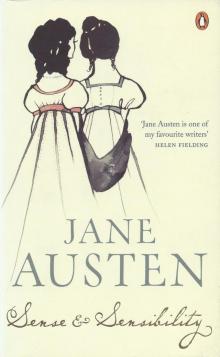 Sense and Sensibility
Sense and Sensibility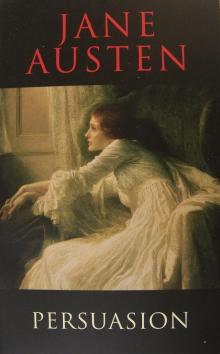 Persuasion
Persuasion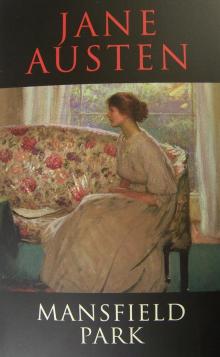 Mansfield Park
Mansfield Park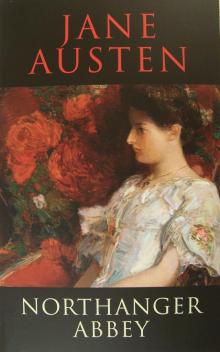 Northanger Abbey
Northanger Abbey Pride and Prejudice and Zombies
Pride and Prejudice and Zombies Pride and Prejudice
Pride and Prejudice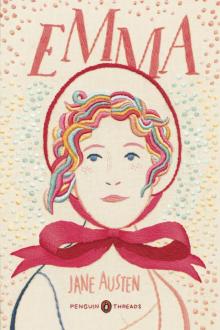 Emma
Emma Persuasion (Dover Thrift Editions)
Persuasion (Dover Thrift Editions)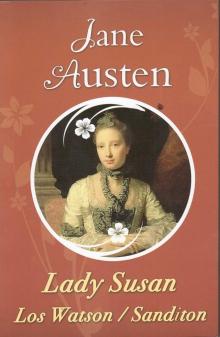 Lady Susan
Lady Susan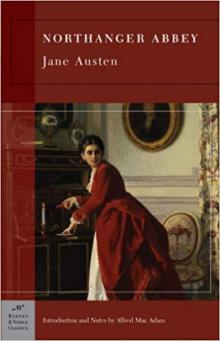 Northanger Abbey (Barnes & Noble Classics)
Northanger Abbey (Barnes & Noble Classics)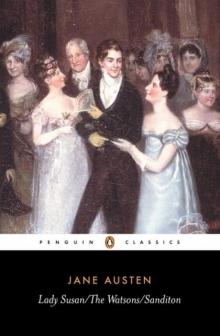 Lady Susan, the Watsons, Sanditon
Lady Susan, the Watsons, Sanditon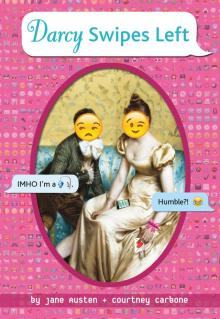 Darcy Swipes Left
Darcy Swipes Left Persuasion: Jane Austen (The Complete Works)
Persuasion: Jane Austen (The Complete Works)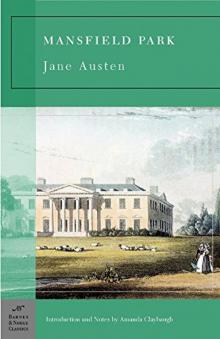 Mansfield Park (Barnes & Noble Classics Series)
Mansfield Park (Barnes & Noble Classics Series)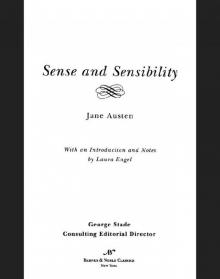 Sense and Sensibility (Barnes & Noble Classics Series)
Sense and Sensibility (Barnes & Noble Classics Series)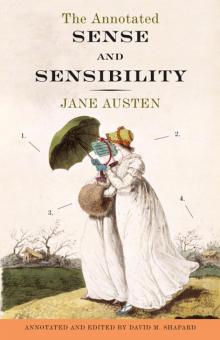 The Annotated Sense and Sensibility
The Annotated Sense and Sensibility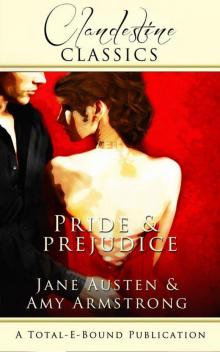 Pride and Prejudice (Clandestine Classics)
Pride and Prejudice (Clandestine Classics) Persuasion (AmazonClassics Edition)
Persuasion (AmazonClassics Edition) Persuasion (Barnes & Noble Classics Series)
Persuasion (Barnes & Noble Classics Series)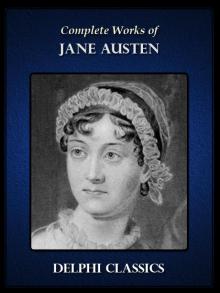 Complete Works of Jane Austen
Complete Works of Jane Austen The Watsons and Emma Watson
The Watsons and Emma Watson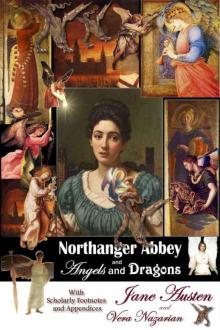 Northanger Abbey and Angels and Dragons
Northanger Abbey and Angels and Dragons Love and Friendship and Other Early Works
Love and Friendship and Other Early Works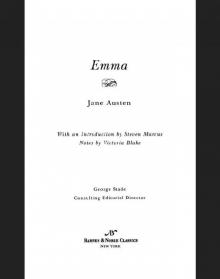 Emma (Barnes & Noble Classics Series)
Emma (Barnes & Noble Classics Series)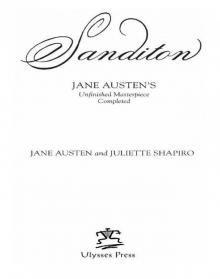 Sanditon
Sanditon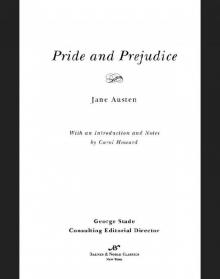 Pride and Prejudice (Barnes & Noble Classics Series)
Pride and Prejudice (Barnes & Noble Classics Series)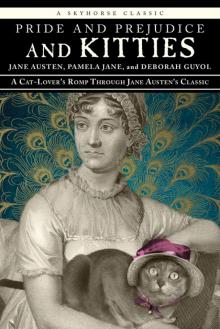 Pride and Prejudice and Kitties
Pride and Prejudice and Kitties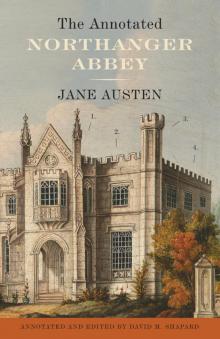 The Annotated Northanger Abbey
The Annotated Northanger Abbey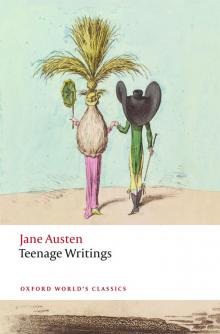 Oxford World’s Classics
Oxford World’s Classics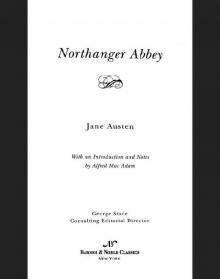 Northanger Abbey (Barnes & Noble Classics Series)
Northanger Abbey (Barnes & Noble Classics Series) The Annotated Persuasion
The Annotated Persuasion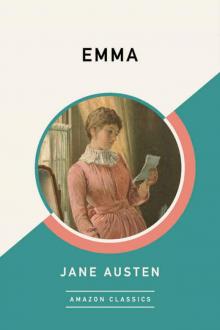 Emma (AmazonClassics Edition)
Emma (AmazonClassics Edition)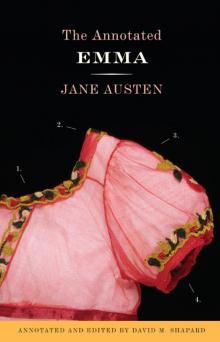 The Annotated Emma
The Annotated Emma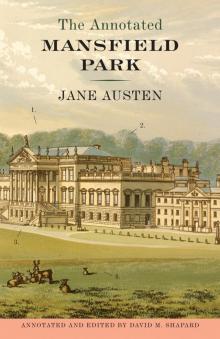 The Annotated Mansfield Park
The Annotated Mansfield Park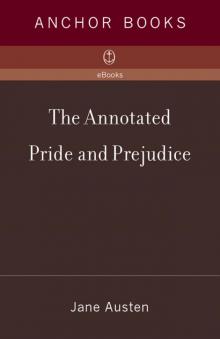 The Annotated Pride and Prejudice
The Annotated Pride and Prejudice